The goal of this internship is to explore the development variability in ascidian embryos.
On the one hand, the embryo development may be highly reproducible (ie stereotyped) within one given species: in some of them, cells can be even unambiguously named through the whole development (e.g. C. elegans) or during the first stages of the embryogenesis (e.g. ascidians [Lemaire 2011]). Such models are then highly attractive for developmental studies. On the other hand, current live microscopy techniques allow the acquisition of temporal sequences of 3D images with a spatio-temporal resolution high enough to follow embryo development at sub-cellular scale [Keller, 2013]. Among them, the light sheet microscopy [Krzic, 2012] allows to image developing embryos of ascidians from the very early stages to the gastrulation stage. It offers an unique opportunity to not only study the development of individuals but also to study the development variability within a population.
A first study [Guignard, 2020] has already permits to extract cell characteristics and lineages for a dozen of embryos (of wild type ascidians), each acquisition being made of more than a hundred of 3D images. In addition, cells can be named in the first developmental stages, based on [Conklin, 1905]. Unpublished results demonstrate a strong reproducibility of cell naming with respect to geometrical (cell position), and topological (cell neighbourhood) considerations. This suggests that cell naming can be learnt from exemplars.
The goal of this internship is to investigate how stereotyped is the embryo development. First, at the cell level, geometrical and topological variability has to be quantified. It has been noticed (unpublished results) that some cells exhibit different division orientation between embryos. Characterization and recognition of such different division patterns will also be of great interest. Second, at the tissue (group of cells having the same fate) level: is the variability intra-tissue different from the variability inter-tissue? Third, at the embryo level, how can be the inter-individual variability quantified?
Requirements:
1. Last year of master in computer sciences or applied mathematics
2. Knowledge in image processing, preferably 3D
3. Computer skills: programming (python), image processing/graphics libraries
4. Written and spoken English
Practical information:
1. This work takes place in a collaboration between CRBM (P. Lemaire’s team) and Morpheme, a joint research team between INRIA, CNRS and the University of Nice Côte d’Azur.
2. This internship is located in Sophia Antipolis (French Riviera).
3. This internship is remunerated.
4. To candidate, please send a curriculum vitae, referees coordinates and a motivation letter to
· Grégoire Malandain (Gregoire.Malandain@inria.fr)
Bibliography
Conklin EG. The Organization and Cell-Lineage of the Ascidian Egg (1905) J. Acad., Nat. Sci. Phila. 13, 1.
Guignard, L., Fiuza, U.-M., Leggio, B., Laussu, J., Faure, E, Michelin, G., Biasuz, K. Hufnagel, L., Malandain, G., Godin, C. and Lemaire, P. (2020). Contact area–dependent cell communication and the morphological invariance of ascidian embryogenesis. Science, 369(6500), eaar5663
Keller, PJ (2013). Imaging Morphogenesis: Technological Advances and Biological Insights. Science, 340(6137), 1234168+.
Krzic, U., Gunther, S., Saunders, T. E., Streichan, S. J. and Hufnagel, L. (2012). Multiview light-sheet microscope for rapid in toto imaging. Nat. Methods 9, 730–733.
Lemaire, P. (2011). Evolutionary crossroads in developmental biology: the tunicates. Development 138, 2143–2152.
To apply for this job email your details to gregoire.malandain@inria.fr
